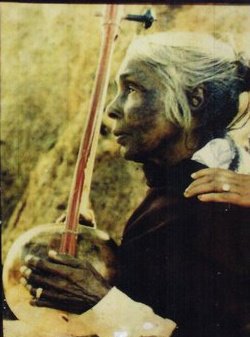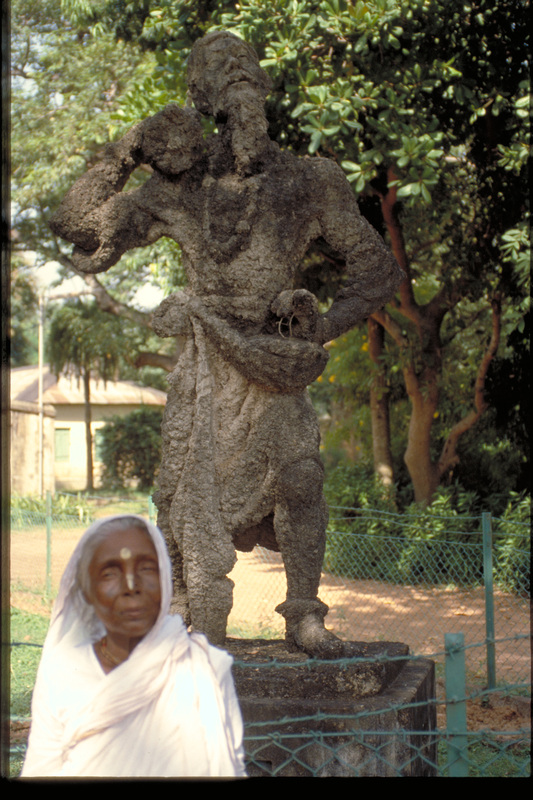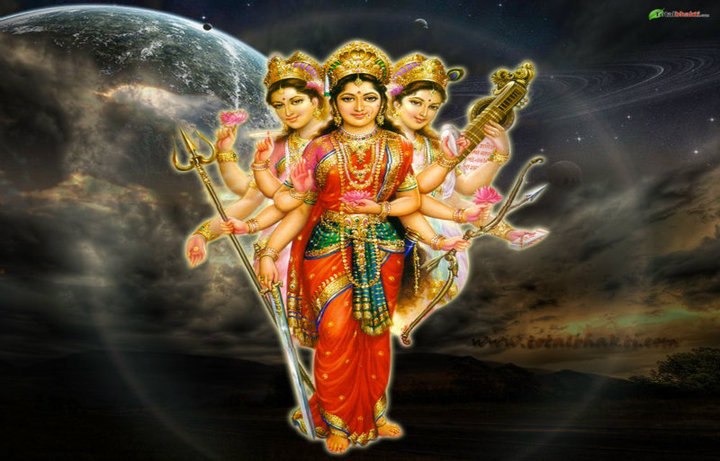
Dogs have always been man's faithful friend, loyal and loving. One is often reminded of the ‘His Master’s Voice’ story which pictorial shows a dog looking into the sound-drum of a gramophone. Vedic Indian dogs were taken to be auspicious symbols. Deities assumed dog form and symbolised security, glory and fidelity of warriors. It is believed that dogs guard the doors of Heaven and Hell. In the Tihar festival, the guard dog is worshiped with tika being applied and the dog garlanded with marigold flower. They were a sign of fidelity and devotion.
Even in the Greek system there is a three-headed dog that keeps vigilance at the gates between heaven and hell. He is called Hydra, which is significant in this context. The dog is the symbol of vigilance, depending upon the quality of utterances that one makes he would either open the gates into heaven or into hell. It is for this reason, prayers are recommended to be uttered loudly by the aspirant in its 3 levels and listen to the import of the sound uttered forth. The import of sound in prayer, is God, while the 3 levels of the physical sound represent the three-headed dog.
SARAMA:
She is the female dog of the Gods and also the mother of all dogs. The Bhagavata Purana regards Sarama as the mother of all beasts of prey. But in this Purana, Sarama is a reference to a daughter of Daksha and not a bitch. Sarama derives her name by being a quick runner. As Supadi, she ‘has good feet’ and as Subhaga, she is the ‘fortunate one’. Deva-shuni means ‘divine bitch’. The offspring of Sarama is called Sarameya. In the four eyed form, the metronymic Sarameya accompanies Lord Yama. In the tenth Mandala of the Rig Veda, Shyama and Sabala are described as Sarama’s daughters. They are messengers of Yama, Lord of the Law. They are guardians to the path of heaven, protecting man on their path. But the Griya Sutra decribes Shyama and Sabala as sons of Sarama and Sisara as their father.
RIG VEDA:
According to the Rig Veda, the bitch, Devashuni assists Lord Indra to recover divine cows stolen by demons called Panis. The loot is hidden in a cave. Sarama pursues the track of the thieves and recovers it by the path of truth. ‘She, the bitch of Indra, undertook a perilous, pioneering journey to the Panis....Both sun and moon are dogs of heaven and sons of Sarama.’ The Panis try to convince Sarama that they could share the loot but she refuses: RV 10.108.2 As such credit is given to Sarama for having recovered the milk of the cattle which symbolises nourishment for humanity. In the third Mandala of the Rig Veda, sage Vishwamitra described Sarama as ‘knowing’ to suggest her intuitive powers.
The Jaiminita Brahmana adds more details to the story. The cows belong to Angiras or Brihaspati. The Panis dwell in Vala, a stone cave. There they fail to lure Sarama to their side. So Sarama makes a deal with Lord Indra that her children will be fed.
Taittiriya Brahmana: Sarama is the goddess in guise of a dog. She was deputed by Lord Indra to roam the mortal world and she witnesses starving. She Sarama created water to sustain food and irrigated the fields. She also found the divine cows and they provide milk to mankind.
SARAMA SYMBOLISM:
Sarama is considered to be the power of Light and probably Dawn as she is ‘the traveller and the seeker who does not herself posses the Truth but rather finds what is lost. Thus she symbolises the Ushas. Kidnapping of the cows represents the disappearance of the bright cows or rays of the Sun. Sarama, the Dawn, finds them. She is then followed by Indra, the God of Light.
VASTOSPATI:
In Rigveda 7.55.2, mythology of heavenly dogs, Sarama’s role is different from the sun and the moon, the other sons of Sarama. He is the guardian of the house of Varuna and his name is Vastospati. He is Rudra. The Gods had created Vastospati, the guardian of sacred ordinance, vratapa, out of their poem, the Raudra Brahman. In ths sky, Vastospati assumes the shape of the dog of heaven.
LORD RUDRA:
He is the star of the stars in the sky, Sirius, the most exalted of all the stars. In the morning dawn, before sunrise, Sirius is the fire-colored boar of heaven and at night he is the silver golden watchdog of the sky: Rigveda 1.114.4. In his most ancient figure, he was the Dog Star, the hound of heaven, gnashing his formidably bright teeth. When the sun of equinox rose in Rohini, he was the star Mrgavyadha, the archer, the hunter of the antelope shooting forth arrows of rays. The dog or hound of heaven is Vastospati, the Guardian of the Dwelling. These figures of the antelope and the hound were not envisioned simultaneously. Rudra’s has more than one form and name and only one of them was seen or thought of at a time.
LORD BHAIRAVA.
Rudra, Bhairava and Virabhadra are the fierce manifestations of Lord Shiva. Rudra is described as Shvapati meaning ‘master of the dog.’ The dog ‘Shvan’ is Bhairava’s divine vahana. ‘Vahana’ means vehicle or transporter.Bhairava means "Terrible" or "Frightful". He is also known by other names: Bhairo or Bhairon or Bhairadya or Bheruji. In Tamil Nadu or the Tamil speaking population He is known as Kaala Bhairavar or Vairavar. Bhairava is the fierce manifestation of Lord Shiva and His annihilation attributes. In some tradition, Vairavar is portrayed as a Shvan and venerated independently. In the rural setting Shvan also accompanies, Muniandy, Munisvarar, Sudalaiman etc.
BHISHMAKA:
He is the King of Vidarbha and the father of Rukmani, Krishna’s wife. In his previous birth, he is said to be a temple priest dedicated to Shiva Padha Puja ot worshiping the Lord’s feet. Usually the prasada, after being offered to the Lord and closure of the puja is served to a dog that waits outside temple premises. The dog then accompanies the priest home and keeps guard along the way. This dog only ate temple prasada. The priest had great affection towards the dog as well. One dark night, by mistake, the priest accidentally walked over the dogs face. In its nature, the dog instantaneously bit the priest before it could realise that the person it bit was the priest whom the dog admired.
The dog regretted its action and thereafter did not accept the food. After some time it died in front of the same Shiva temple. The gods, seeing this great gesture of loyalty from the dog, awarded the post of the Suryan or Sun with the name Vivasawan. The priest had also died in memory of the dog. In reverence to his Shiva Padha puja, in his next life, this Brahmin priest took birth as a King of Vidarbha. He was called Bhishmaka.
MAHABHARATA ADI PARVA:
Janamejaya conducts a yagna and his brothers beat up a dog which comes near the sacrificial site. The crying dog complains to its mother Sarmana. Sarama curses Janamejaya that since its son was harmed for no reason, unseen danger will befall him. A forewarned Janamejaya, finds a priest by the name of Somashravas to free him from the curse.
SABHA PARVA:
Sarama stands to be listed as one of the many goddess that worship Lord Brahma. Thus they become members of Brahma’s court.
VANA PARVA:
Sarama is listed as Matrika or Mothers. She is also named as Manushaya grahas or evil spirits which are authorised by the war-god Skanda to devour or snatch human foetuses from wombs.
SVARGAROHANA PARVA:
Thirty-six years after the Krukshetra war, out of gratitude Yudhishthira makes Yuyutsu king of his old territory Indraprastha. He arrives at the entrance to paradise, carrying a dog in his arms. His brothers and Draupadi, who left the earth with him, have fallen from the mountains into the abyss along the way. A gatekeeper tells him to abandon the dog if he wants to enter paradise. He refuses to leave a creature so faithful, and is permitted to enter, for this was a test, the dog was the god Dharma in disguise. Yudhisthir tells Lord Indra,“This dog, O Lord, is highly devoted to me. He should go with me. My heart is full of compassion for him''
In paradise, further surprises await him. His enemies, above all Duryodhana and Karna are there, smiling and contented. The Pandu sons and Draupadi, on the other hand, seem to be in a place of suffering and torment. Why? Yudhishthira decides to stay with his loved ones in hell, rather than enjoy the delights of heaven with his enemies. This is the ‘final illusion’ is a tests after which they are all permitted to enter paradise. When Yudhistir entered heaven, his dog transformed itself to Yama.
In Hindu thoughts, neither svarga or naraka are eternal, but only intervals between rebirths. Everyone spends some time in hell to pay for the sins of the most recent life. One who lives a spiritual life and good karmic deeds according to scriptural injunctions, spends prolonged enjoyement in heavenly planets. In other words, Yudhishthira had to experience hell for only a moment, because of his lie to Drona that his son had died. Heaven is obtained by good deeds, but only for a limited time until the accumulated merit runs out.
LORD DATTATREYA:
He is associated with four dogs. This would be posted separately.
Hara Hara Mahadeva.
(draft Animals in the Hindu way of Life)
by Yogi Ananada Saraswathi
DOG SYMBOLISM IN THE HINDU WAY OF LIFE:
In mythology, four dogs symbolically represent the Vedas. Adi Shankara and his disciples had taken a bath in the Ganga river and proceeded to the Kasi Vishvanaath temple. A Chandala with his wife and Four Dogs blocked the narrow path. Neither the chandala nor the four dogs were recognised. So, Shankara said "Gachchha, Gachchha," move away, move away. At this Chaandaal asked him - "By asking to move away, do you want the body which is made of food to move away from another body which is also made up of food? Or do you want consciousness to move away from consciousness?" Adi Shankara answered the Chandala in five verses called as Maneesha Panchakam. ‘Maneesh’ means conviction a Panchakam means five verses.
Notwithstanding, the acharya says that he would accept a person as his Guru if he possess highest wisdom irrespective of the fact that the person is a chandala or a Brahmin. In the second verse, correct knowledge becomes the qualification even if he is a chandala. In the remaining slokhas, true knowledge is addressed. However, the acharya had no direct answer if a chandal would have access to Vedantic knowledge.
MAHA VAAKYAS:
Adi Sankaracharya captures the essence of the Mahaa Vaakyas of all the four Vedas: Aitareya Upanishad -Rig Veda, Pragyaanaam Brahma - Consciousness is Brahman ; Brihadaaranyak Upanishad - Yajur Veda, Aham Brahmasmi - I am Brahman; Chhaandogya Upanishad - Saama Veda, Tat Twam Asi - You are that; Maandookya Upanishad - Atharv Veda, Ayam Aatma Brahman - This Self is Brahman.
UNTOUCHABILITY:
There is no sanction of the institution of untouchability in the Shastras. The acharya was aware of this as he wrote commentaries on the Eashopanishad. Denouncement of the practice is seen in Verse 7: “If one sees in Atma in all creations and in all creations the Atma, then one need not feel greatly disgusted.” Verse 8: “When one realizes that all creations are just manifestations of Atma why one should feel attachments and pains? He sees unity in all creations.” Similar sentiments are expressed in his commentary on Gita 6.29 in the Shankara Bhasyam,. However Shankara does not address untouchability when he answered the Chandala. As such it is said that the acharya missed a golden opportunity to do away with untouchability.
QUESTIONS AND ANSWERS:
Question 1: By asking to move away, do you want the body which is made of food to move away from another body which is also made up of food? Question 2 - Do you want consciousness to move away from consciousness?
Is there is any difference between the reflections of the Sun seen in the Gangaa waters and the water of a gutter in the house of an outcaste? Is there any difference between the space in a gold pot and in a mud pot? What is the illusion of difference in the form? That this is Brahman and this is outcaste? Adi Shankara answers in verse form.
Verse-1
If a person has attained firm knowledge that he is not an object of perception, but is that pure consciousness which shine clearly in the states of waking, dream and deep sleep; an which dwells in all bodies of the Universe, from that of Creator Brahmaa to an ant, as a witness; then he is my Guru - this is my conviction.
Verse-2
I am Brahm (pure consciousness). it is the pure consciousness which appears as this Universe. All this is only something conjured up by me because of A-Vidyaa (nescience) which is composed of the three Gun (Sattwa, Rajas and Tamas). One who has attained this definite realization about Brahm which is bliss itself, eternal, supreme and pure, is my Guru, whether he is an outcaste or a Braahman - this is my conviction.
Verse 3
Having come to the definite conclusion, under the instructions of his Guru, that the entire Universe is always perishable, he who, with a calm and pure mind constantly meditates on Brahm and who has burnt his past and future sins in the fire of knowledge, submits his present body to the operation of his Praarabdh Karm - this is my conviction.
Verse 4
The Self or Pure Consciousness is experienced clearly within by animals, men and gods as „I‟. It is by the reflection of this pure consciousness that the mind, senses and body which are all insentient appear to be sentient. External objects are perceived only because of this consciousness. This Self is however, concealed by the very mind, senses and body which are illumined by it, just as the sun is concealed by clouds. The yogi who with a calm mind always meditates on this Self is my Guru - this is my conviction.
Verse 5
The Self, which is Brahm, is the eternal ocean of supreme bliss. A minute fraction of that bliss is enough to satisfy Indra and other Gods. By meditating on the Self with a perfectly calm mind the sage experiences fulfillment. The person whose mind has become identified with this Self is not a mere knower of Brahm, but Brahm himself. Such a person, whoever he may be, is one whose feet are fit to be worshipped by Indra himself - this is my definite conviction.
SHIVA PARVATI: After hearing the above replies Lord Shiva and Mother Parvati who were in the disguise of the Chandala couple accompanied by the Vedas, manifested their real form to bless him. They and the four dogs, the Vedas then disappeared miraculously.
Hara Hara Mahadeva.
(draft Vedanta. Cf Dogs in the Hindu way of Life)
by Yogi Ananda Saraswathi
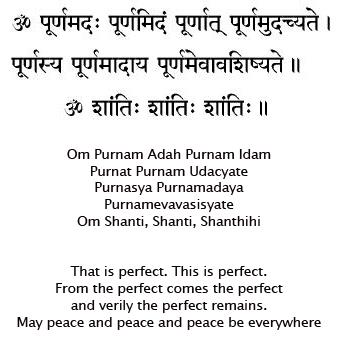

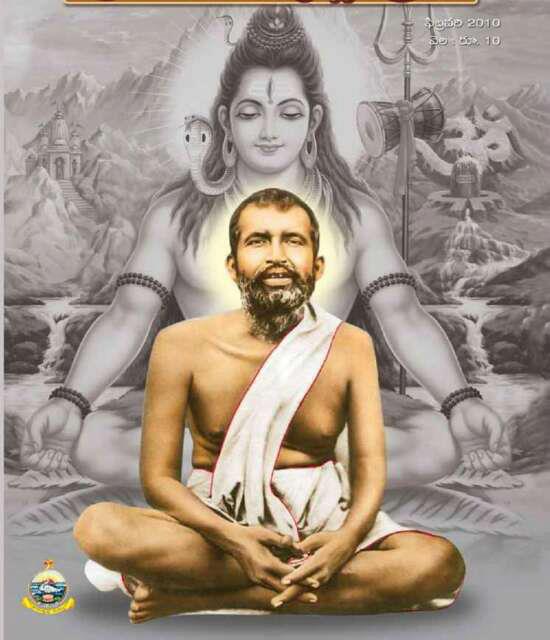

















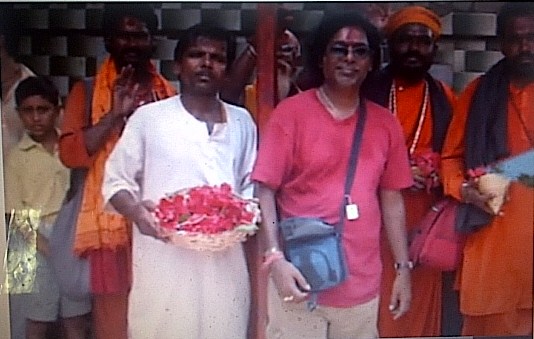




 RSS Feed
RSS Feed
